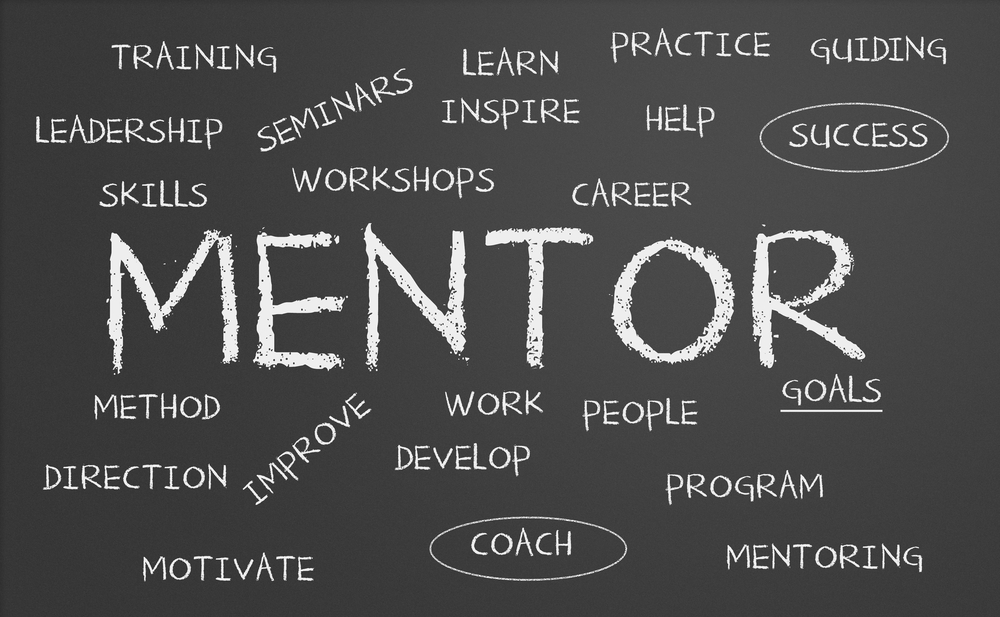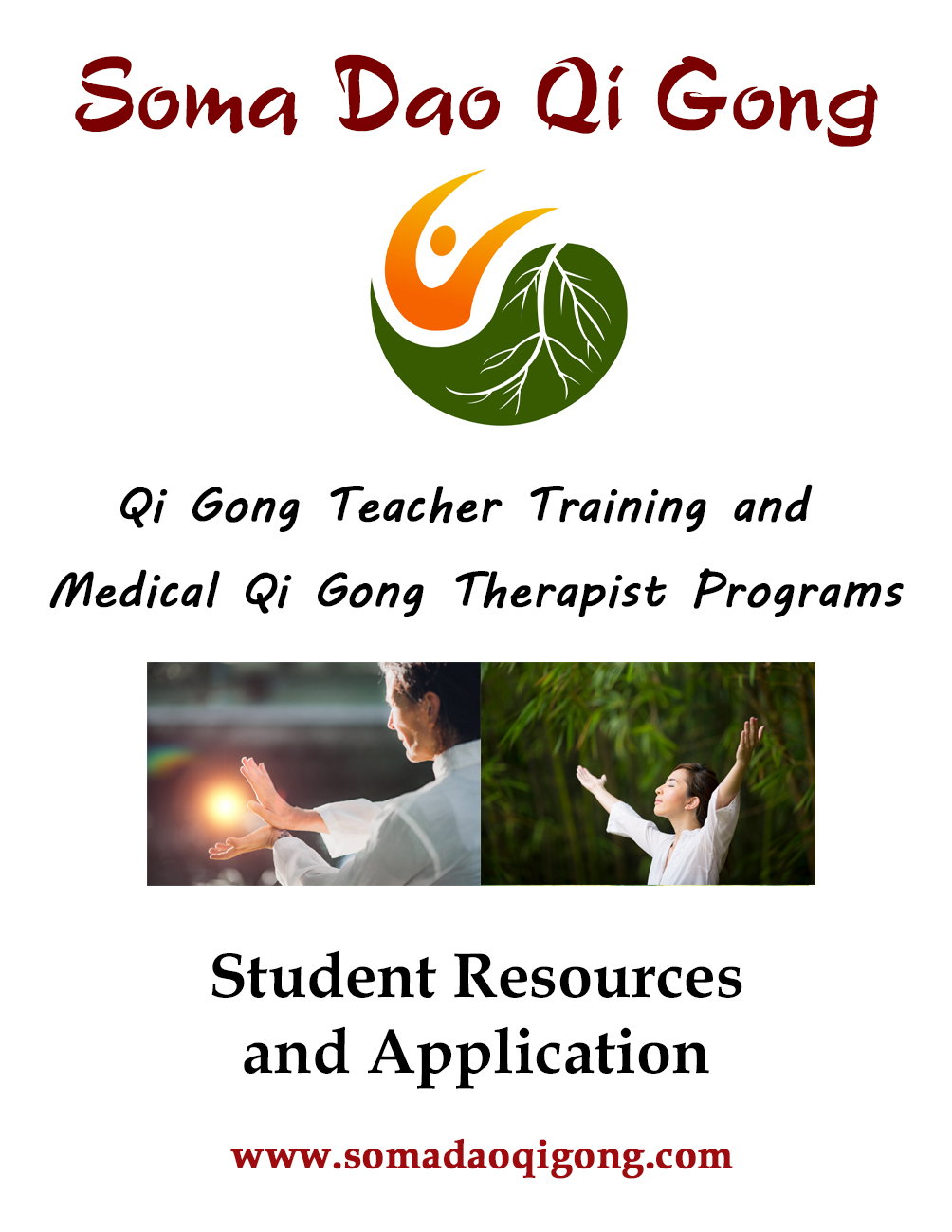
Become a Traditional Qi Gong Teacher
300 Hours ~ Over 1 – 2 Years
Join Until June 23, 2025
Mondays – 6:00 pm – PST
A long and healthy happy life is a very personal journey.
Some of us experience chronic illness, some are athletic and full of vitality, some are suffering deeply on a soul level, and some find a path and practice hold all three of those possibilities.
There are countless published articles on the measurable benefits of an Embodied, Breath focused, stress reducing, and gently challenging for the body. Our connective tissues, fascial system, and bone density, hold our vitality like a tissue bank.
This is referred to as Jing (Essence) in Traditional Chinese Medicine. Your Essence is the foundation for your both Qi (Energy) and Shen (Spirit).
Many forms of Meditation, that have been practice since the last Ice Age, show profound benefits to overall health, mental clarity, focus, and memory. For those of us Healing our Bodies, Minds, and Souls, Seated Meditation is a challenging mirror of a disorienting childhood and overwhelming present. Embodied conscious movement meditation and interactive stress relief practices are our birthright.
Soma Dao Qi Gong offers a unique combination of traditional Shaolin and Daoist Lineage Qi Gong practices with an ancient form of Dao Yin, from lineage of Traditional Chinese medicine focused on Trauma Therapy and Spiritual Recapitulation.
The 300 Hour Qi Gong Teacher Training for 2025 will include 8 Modules, ore specific areas of focus. As a potential Qi Gong Teacher, this will give you a deep foundation in many aspects of this profound gift to the world. Also, as a future teacher, this format supports teaching several different kinds of Qi Gong, Breathwork, and Meditation as you form your career path.
TAP HERE for a Deeper Conversation about Qi Gong
TAP HERE for a Brief History of Qi Gong
Here is your homework…
Practice Awareness, Adaptability, Flow, Resilience, Release, and Stillness.
What is a Qi Gong Class Like?
“A Qi Gong class is like going dancing. The experience depends on the music that is playing.”
Almost all Qi Gong classes, or solo practice sessions, are going to flow to the ‘rhythm’ of the following specific components of your practice. What you choose, how much time you spend with each, and how you play with flow, intensity, and stillness, becomes the music.
The following practices are the most essential to a comprehensive foundation in the art and science of Qi Gong.
- Intentionally opening and closing your practice
- Connecting with your breath and Qi
- Opening your joints and relieving chronic tension
- Exploring and Expressing the Energies of Life(Yin, Yang, Five Elements, etc)– or Qi Gong Play!
- Engaging the Relaxation Response(Fang Song) – learning to relax is a skill!
- Seated Qi Gong practices and Breathwork – for deeper healing.
- Fitness Qi Gong for core tone and dynamic flexibility.
- How to Meditate, seated, standing, walking, and lying down.
- An introduction to Nei Gong– Inner Cultivation practices.
- An introduction to the Daoist Universe and the many meanings of Qi
How would you want to learn, practice, or teach the above skills? They are the most essential to a comprehensive foundation in the art and science of Qi Gong. If you are thinking of teaching, imagine spending so much time on each of these opportunities that you could guide people through a ‘flow’, or a Qi Gong sequence, for each.
Learning all of these skills is the first step because you are learning the Qi Gong alphabet.
Can you imagine learning in a practical, yet playful way?
These shapes, styles of movement, alignment principles, Mind/Body/Breath combinations, and effects, are the basis of a language, a way of communicating with your embodied experience, your deeper energetic systems, and your Spirit.
If you already have a personal practice or are teaching Qi Gong and are looking for new skills, forms, and advanced principles, there are many levels of unique practices and knowledge to learn from in the Soma Dao Qi Gong program.
If you are not sure if you want to teach, take your time, and learn from these powerful skills, practices, and experiences as you decide.
Imagine being able to help people improve their energy level, mood, fitness, mindfulness, adaptability, and patience.
The Eight Modules of the 300 Hour Foundations Course
Module One - Qi Gong for Relaxation, Flexibility, and Inner Alignment
In Qi Gong, we begin with Relaxation, Flexibility, and Inner Alignment
Relaxation is an Instinctual Need
If you want to relax right now, HERE is a Breathing Exercise.
There is a reason why the oldest traditions of Embodiment practices like Qi Gong, Yoga, Shamanic Dance, Singing, Drumming, Fasting, and Meditating alone in Nature have existed for so long.
Our Bodies and Minds NEED times of open, silent, tranquil, and restorative ease.
Flexibility and Tensegrity
The tone and health of your muscles and connective tissues can determine your Vitality and Longevity, more than many other influences. Qi Gong focuses more on pliability, torsion, alignment, and release, instead of trying to stretch too far.
“The hard and stiff are death's companions. The soft and supple are life's companions.” – Dao De Jing, Verse 76
Inner Alignment
Like moving towards the eye off a hurricane for safety, Qi Gong encourages finding a centered, aligned, and somewhat resolute quality of stillness. As well, most practices bring your awareness of your many centers of movement, instinct, emotion, and existential truth.
‘Go dancing and find out where the center of your unique dancing comes from.’
Module One Contents:
Stand Like A Mountain, Bend Like Bamboo, Flow like Kelp in the Ocean
- Qi Gong practices for opening your arms, shoulders, and neck
- Tai Chi exercises to reconnect and coordinate your waist and hips
- The Five Pillars of Standing Qi Gong
- Introductory Animal Play and Shapeshifting
- Floor Work - Reactivating your core, realigning your spine, stretching your whole body
- Improving pelvic floor tone
- The principles and practices of Standing and Seated meditation
- Seated versions of the fundamental exercises
- Fundamentals of Breathwork
- The subtle art of progressive relaxation
- understanding Qi
- Qi Gong philosophy and Wisdom Teachings
Module Two - Cultivating Qi Awareness and Sensitivity
Qi Gong, as you probably expect, is going to introduce you to another way of experiencing the world.
In the endeavors of healing, spiritual reunion, or developing martial arts skills, a direct and tangible relationship with Qi is necessary. You will learn the skills used by Chinese medicine practitioners and warrior monks to connect with the Qi of your Body and the Qi of the Natural world. As well, Qi Gong can help you focus on applying Qi towards your health and happiness. With practice, you will encounter new experiential realms and ways of interacting with the subtle influences in Life and the Universe.
Connecting with Qi
Have you ever listened to the space between the flash of lightening and the sound of thunder…?
Feeling into your physicality, somatic experience, and intuition is a doorway to many things, such as Self-Regulation, being able to relax completely, and embodied or Somato-Emotional Intelligence. You just need a regular and deeply engaging practice.
We all need a practice. If you want more than basic fitness and comfort, find a teacher with a clear, practical, and meaningful (to you) process of learning embodied awareness.
Relearn how to breathe. Fall back in love with stillness and silence. Dance like your Ancestors are watching!
Module Two Contents:
- Cultivating Qi sensitivity and the origin of the Inner smile
- Cultivating your three Dan Tian , energy gates and access points
- Standing Qi Gong Warm Up
- Generating a Qi Ball (La and Na - Pulling Open, Pressing Closed)
- Transforming your Sacred Qi Cauldron
- Cultivating interactive awareness (yi nian)
- The Balancing heaven and earth Qi Gong form
- Clearing turbid Qi and Bathing in Pure primordial Qi
- The Four Oceans of Dao
- Seated versions of the fundamental practices
- Tracing and Clearing Your Microcosmic Orbit
- Lying Qi Gong for relaxation, deeper sleep and dream healing
- Balancing your Three treasures and three regulations
- Daoist cosmology and ontology
- Qi Physiology and Aliveness
- Qi Wounds and Qi Deviation
Module Three - Seated Qi Gong, Breathwork, and Daoist Meditation
An important principle in Qi Gong is ‘Stillness in Motion.’
In life, sometimes the slower and more present you are, is what matters the most. Research shows that calm and alert states of stillness and silence can help your nervous system reset itself, and for your brain to physically regenerate itself. Seated Qi Gong and Meditation are an essential aspect of cultivating longevity.
Module Three Contents:
Have a Seat - Why seated Qi Gong is Essential (Especially for Modern Teachers)
- Office chair embodiment resets
- State Shift and Shapeshifting skills to rediscover animistic wholeness
- The Ten pillars of seated qi gong
- Qi Gong for rehabilitation
The four branches of Breathwork (list)
- Natural Breathing (Shun Hu Xi)
- Reverse Breathing (Ni Hu Xi)
- Vase Breathing
- Sensual Breathing
- Nei Qiang (Inner Flexible Vessel) Breathing
- Spontaneous/unrehearsed Breathing (Zi Ran Hu Xi)
- Underwater Breathing
- Water Surface Breathing
- Water Stalking Breathing
- Pore Breathing
- Bellows Breathing
- Tortoise Breathing
Seated Meditation
- The Barrier of Sitting and the Three narrow passes of the spine
- The 3 moments of Chan/Zen Meditation
- Introductory Daoist Inner Cultivation (Nei Gong)
- Introductory Self Healing (Nei Yang Gong) skills
Module Four - Applied Principles and Traditional Forms
Falling in Love with Repetition, Flow, Connection, and Meaning
Traditional Qi Gong forms, or choreographed routines are the most popular on common aspect of modern Qi Gong practice. Falling in love with repetition is the best way to include and refine the internal awareness practices and principles of more advanced Qi Gong training.
Module Four Contents:
Qi Gong Principles
- The three Treasures
- The three regulations
- Your Three Selves
- The Three Basins
- The Four Layers of Interaction
- The Five Pillars of Qi Gong
- Ting Jin – The Power of Listening
- Opening the Kua System
- Fundamentals of the Yi Jin Jing (Fascial Tensegrity)
- Your Inner Landscape (Nei Jing)
- Your Five Spines
- States of Being and State Shift
- Ba Gua circle Walking Qi Gong
- Daoist Principles of Conscious Becoming
Selected Qi Gong forms
- Balancing Between the Sky and Land (Tian Di He Yi Fa)
- 8 pieces of Brocade (Ba Duan Jin) (For Kids)
- Ba Duan Jin (Shaolin version)
- Ba Duan Jin (Daoist Swimming Dragon version)
- Tai Chi 18 gesture qi gong (Taiji Shibashi) First sequence
Module Five - Silk Reeling and Standing Meditation
This Module focuses on Qi Gong practices that, not only take your practice deeper inward, but also help your structural alignment. Standing in static postures has also been shown to lower blood pressure, improve memory and focus, as well as build and maintain stronger bones.
Module Five Contents:
- Qi Gong routine for Agility and Balance
- Joint Pliability and Tone Review
- What is Silk Reeling (Chan Si Jin)?
- The Eight Core Silk Reeling gestures
- Exercises to connect your shoulders and hips
- To coordinate your elbows and knees
- Moving from your center through your fingers and eyes
- The Inner Art of Standing Meditation (Zhan Zhuang)
- The 8 primary postures
- The 16 inner refinements of Zhan Zhuang
- An introduction to Yi Quan
- 100 Days of Meditation – A Traditional Rite of Passage and Progress
Module Six - Five Animal Frolics - Old and New
Five Animal Frolics, or State Shift and Shape-Shifting Qi Gong has a very long history of imitating animals. Being playful, becoming a Dragon or a Monkey, and allowing your body to dream it has infinite possibilities is very good for your Spirit. Breathing with intention, until you feel altered enough to see the Universe as a friend is also very good for your Spirit.
The famous TCM doctor Hua Tuo formalized this ancient Indigenous practice almost 2,000 years ago. Dr. Hua Tuo was also the first Chinese medicine surgeon, being the first in the world to developed the use of anesthesia, and furthered the knowledge of anatomy.
Hua Tuo's incredible life ended at age 97 by being poisoned by a jealous official. His primary student lived to be well over 100 years old. in an unfortunate manner.
Five Animal Frolics is one of the oldest forms of Qi Gong is imitating and playing like an animal. This opportunity to lose yourself while turning into a Panther, Bear, Tortoise, Ape, or Phoenix can connect you with some deeper instincts and free you from feeling stuck – on many many levels. These forms can be practiced slowly like Tai Chi or with the agility of a martial artist. The more you challenge your agility, balance, and coordination; while keeping your muscles and tendons toned and pliable the longer you will live. More importantly, the more alert and physically fit you can be up until your last days of Life.
Module Six Contents:
- Animal Frolics and the Origins of Qi Gong
- Shapeshifting and State of Being
- The Classic Five Animals (Deer Dragon, Tiger, Monkey, Crane
- Inner Nature and Outer Aliveness
- Standing Frolics
- Seated Frolics
- Sky Frolics
- Becoming An Iridescent Panther
- Becoming A Black Bear
- Becoming A Red Phoenix
- Becoming A White Ape
- Becoming A Golden Turtle
Longevity practices should bring aliveness, playfulness, and gratitude into a very long and healthy life.
NEVER stop Playing!
Module Seven - Cultivating Vitality and Longevity (Yang Sheng Fa)
The Chinese characters for Yang Sheng Fa (養生法) describe feeding your leftovers to your goat, just in case you need to eat your goat to stay alive. Some aspects of Chinese philosophy are very pragmatic. Said another way, Yang Sheng Fa is a lifelong daily practice of self-care that involves all aspects of your life, even the humble and seemingly unimportant things. This approach to living a conscious and healthy life is more about flow and seasonal alignment.
The Yang Sheng Tradition can be described as Chinese Medicine 101 – if you are ill and want to understand how to get healthy, you need to know what went wrong. To understand what went wrong, you need an understanding of how your internal organs, glands, metabolic and immune systems, and your circulation works.
Becoming a Professional Qi Gong teacher is about both, the ability to be more specific, and the ability to speak to the broadest and most impactful challenges of our time. Because I am speaking about becoming a health care professional, even if it is just for yourself, your family, and friends, I want to encourage you to keep learning about health.
Module Seven Contents:
The Yang Sheng Tradition of TCM
- The Four Constitutions and The Five Taxations
- A Seasonal Diet
- Metabolic and Spiritual Fasting
- Seasonal Fitness strategies for young and old
- Mental and Emotional Hygiene
- Conscious Parenting
- Sacred Intimacy
The Ten Steps to Abundant Health
- Start with the Do’s, Work on the Don’ts
- Design Your Personal Health Journey
- Get Enough Sleep, Rest, and Play
- Fitness, Fat Loss, and Fasting Strategies
- Stabilize Your Metabolism (Jing and Shen)
- All Disease Starts in Your Gut
- Resetting Your Immune System
- Support Your Liver’s Detoxification Pathways
- Increasing Elimination and Circulation
- Restore Your 60 Trillion Cells
Module Eight - Higher Levels, Teaching Skills, Professionalism, and Modern Marketing
In this final Module, we will spend some time having a converstation and learning about the more advanced practices of Qi Gong, Dao Yin, and Inner Cultivation (Nei Gong).
Nei Gong Meditation and Your Six Innate Minds (Yuan Xin)–Nei Gong is a life-long path of meditation and learning to become a more adaptable and present human being. If there is one final attribute to add to your Traditional Qi Gong training, it is to find some guiding wisdom and Spiritual practices to cultivate an agile and self-aware Mind, as well as a collaboration of your instinctual, intuitive, adaptive, feeling, egoic, and existential Minds.
I will also offer additional Webinars on the teaching process for any sport or skill, the ethics of teaching a Spiritual practice to those in a vulnerable place, and what I have learned about beginning and building your online presence.
Online Training needs Consistent and Spontaneous Support
There are three forms of Live, Interactive, and Individual support
“If you are not certain about becoming a teacher, you are invited to explore
and enjoy all of these skills and support for your personal practice.”

Weekly Classes
The first form of support will be weekly classes.
Some will be LIVE with Michael Smith, some will be previously recorded, and some will be presented by advanced students of Soma Dao Qi Gong.
EVERY WEEK, we will focus on the most essential, foundational, and tangible principles of Qi Gong practice.
Similar to an in-person class, we will practice together for part of the class, then I will teach a new exercise or skill…

Bi-Monthly Group Webinars
Every second month there will be a LIVE group online webinar.
For the first few months, the focus will be on going deeper into the principles and theories of Qi Gong. Once the group has learned the essentials and is ready to begin sharing, you will have an opportunity to share an exercise or two to safely experience ‘teaching’ among your peers.

Private Personal Mentoring
The third form of LIVE and in-person interaction will be your Private Review, Evaluation, and Guidance sessions.
These Bi-Monthly One-on-One sessions will give you a chance to demonstrate what you are learning, ask questions, share breakthroughs, and get some feedback on the subtle details of your practice.
Mentoring is always about Guidance, Evaluation, and Support.
For an Athletic, Qi Gong, Meditation, Shamanic or Medical Student to feel confident, they naturally require consistent opportunities to connect, share, inquire and explore whatever skills and knowledge they are trying to master.
The Soma Dao Programs focus on connection and support.
Description of the 300-Hour Program
(from last year – new video on the way)
(5 Min)
Join Until June 23, 2025
Mondays – 6:00 pm – PST
Access to all video and audio content as it is published
As a graduate, you will also become a part of an international community of people from around the world, dedicated to health, self-awareness, and a more conscious way of living.
Schedule a Phone or Video Interview with Dr. Michael Smith to make sure that this long-term learning opportunity is aligned with your present health status, personal needs, and long-term goals.

I am interested in learning more about becoming a Qi Gong Teacher and/or study advanced Qi Gong in a traditional lineage and would like to receive your newsletter.
YES! Send me a copy of the Student Resource Guide
(We respect your privacy)